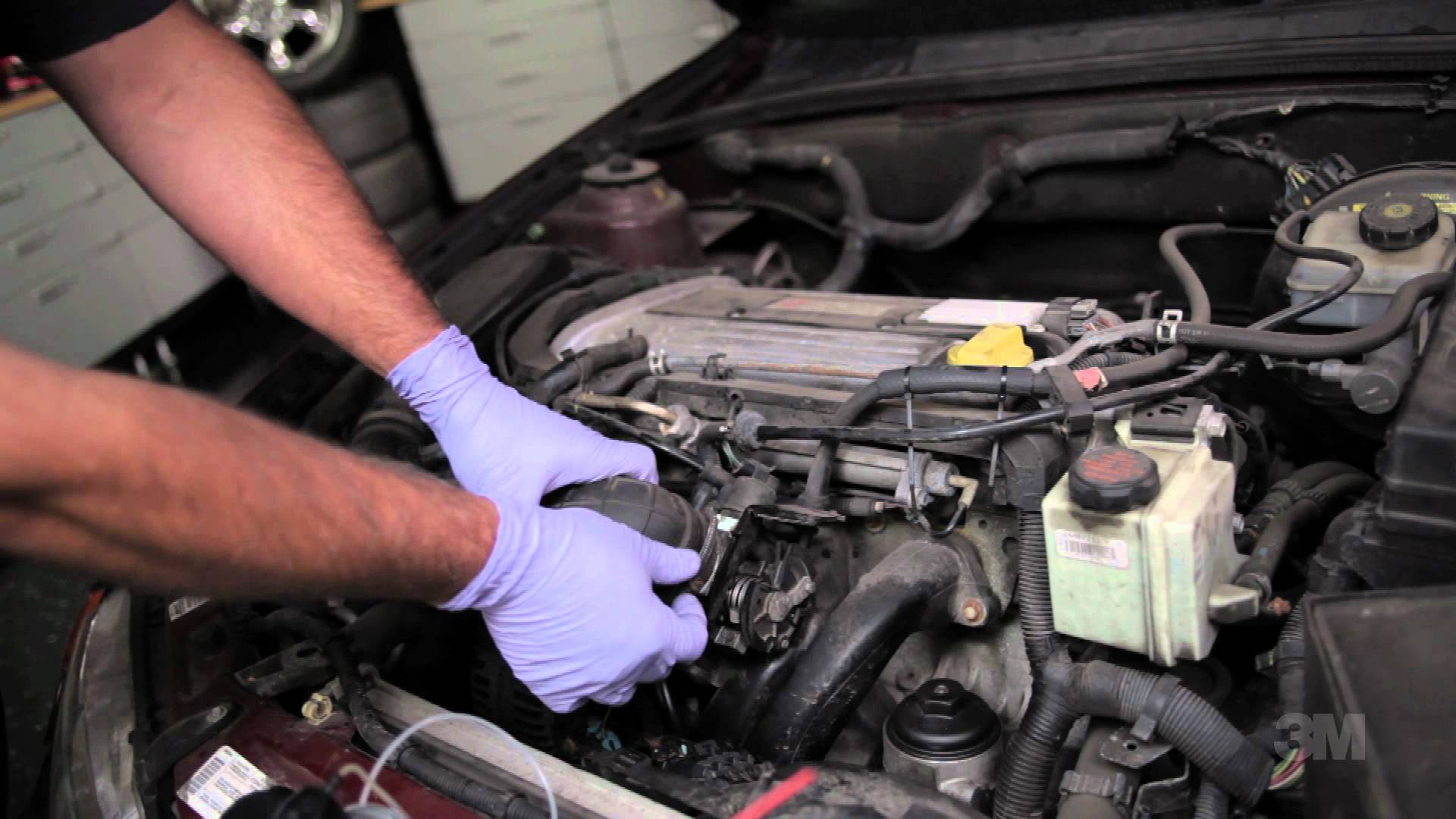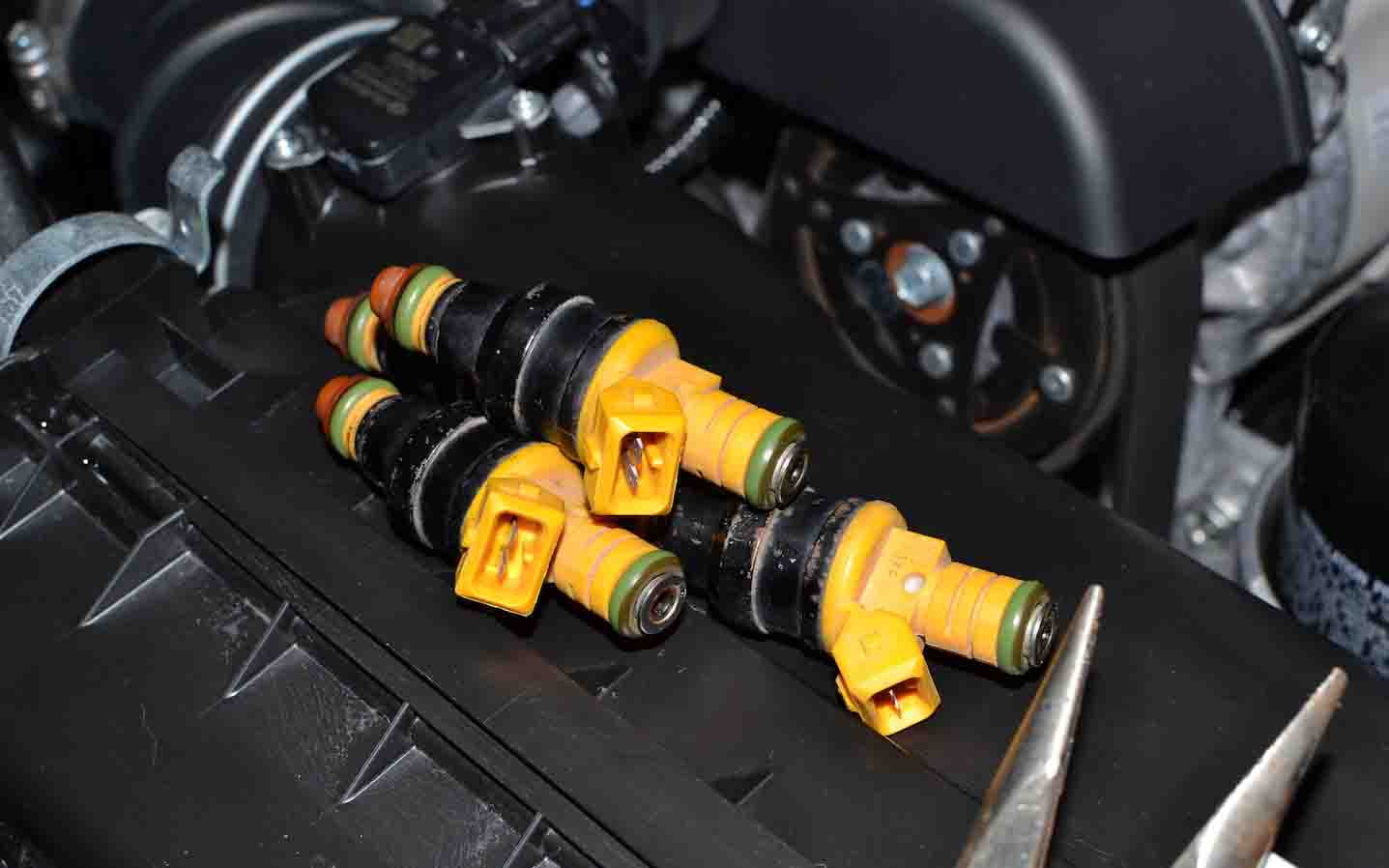
Source: Andy Jensen
Maybe your check engine light just came on, and the code is P02XX, pointing at a fuel injector issue. Or perhaps you just bought a used car with an unknown maintenance history and want to give it a full tune up. Before you go and buy replacement fuel injectors, take the time to give your current ones a thorough cleaning.
How Clogged Fuel Injectors Occur
Fuel injectors spray tiny amounts of fuel at a time into the combustion chamber. Since they deal in such small amounts, even the tiniest particulate or impurity in the gas can cause a degradation in the fuel injector's flow rate or spray pattern, resulting in clogged fuel injectors. Fuel regulations require minimum levels of detergent additives, but these cannot compensate for a rusty gas tank or a degraded fuel filter. In extreme cases, this compromises the fuel injector spray pattern, and the PCM will see this, store a code and display a check engine light. Seriously clogged fuel injectors can cause a misfire or an irregular idle, so clean fuel injectors are essential.
Concentrated Cleaning of Fuel Injectors
By now you might be thinking, “If the fuel treatments work, why not just put a bottle in the tank and go?" The problem there is that the fuel system additives you put in the tank are diluted by a full tank of gas and are less effective than running undiluted cleaner directly through the affected part. Second, the in-tank fuel treatments flow the same way as fuel, while the concentrated cleaning method offers a back-flow to flush out any particles that are too big to flow further downstream to ensure clean fuel injectors.
Is There a Difference in Fuel System Cleaners?
For our purposes, any fuel system cleaner will work. Corvette people love Techron, Mustang fans like Red Line, and Sea Foam is popular around the world. And then there's Lucas, Gumout, Marvel, etc. All have different cleaning solutions of varying strengths, but any gas-tank-style fuel treatment will work fine at 100% strength. Some videos on YouTube suggest using brake cleaner. While brake cleaner is an amazing cleaner, it's overkill in this situation and says on the back of the bottle that it degrades rubber and plastic. If you don't have a fuel system cleaner on hand, you can use carburetor or throttle body cleaner instead. Both products are designed to power through fuel deposits and buildup and are also safe for rubber and plastic.
This is a project that needs some know-how
-
Remove the fuel injectors from the engine.
-
Remove the o-ring from the in-flow (fuel rail) side of the injector.
-
Connect the tubing to the in-flow side of the fuel injector. Tighten a hose clamp so it doesn't leak.
-
Connect the electrical leads to the fuel injector.
-
The other side of the leads connect to the battery, with standard black wire to the negative terminal and red to the positive terminal. The injector will fire as long as there is power, so connect the positive only when ready to fire.
-
Wear gloves and safety glasses. Add injector cleaner to the tube and connect the power, giving the injector several short sprays.
-
Disconnect the leads from the injector and remove the hose clamp and tube. For a complete reverse flow flush, put the tube on the out-flow end of the injector.
-
Reconnect power to the injector, and it will attempt to fire. Let gravity flow the cleaner through the injector in reverse, removing any deposits that are too big to flow downstream.
-
Slide on new o-rings, and the injector is ready for reinstallation. Repeat with other fuel injectors.







